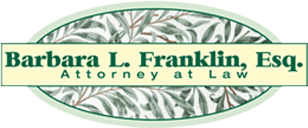Submitted by Barbara Franklin on
The History of Farm Mortgage Relief under Chapter 12 Bankruptcy
In the early 1980s, as with homeowners in the recent foreclosure crisis, many farmers in the heart of the farm land bubble were faced with loans whose face value exceeded the current market value of the real estate serving as collateral for the loan. They were figuratively under water. Many farmers, like many homeowners now, were in danger of losing their primary residences, with little prospect of relief under the bankruptcy options available to farmers at that time. As is the case today, Chapter 13 did not allow for the modification of debt secured by a primary residence. Chapter 11 involved more complexity than a family farm reorganization required, making it difficult to navigate. Chapter 11 contains provisions that allowed creditors to effectively block a stripdown: under secured creditors could elect to treat their entire claim as a secured claim. While farmers seeking to reorganize could, in principle, choose to file under Chapter 13 (wage-earner bankruptcy) or Chapter 11, the average farmer typically exceeded the debt limits for filing under Chapter 13, nor could a corporation or partnership file Chapter 13. Unfortunately, Chapter 11 was for inappropriate for most of these farmers as an option, since it is designed to deal with the reorganization of corporations and not small and medium-sized farms.
After much debate Congress passed legislation establishing a separate chapter in the U.S. Bankruptcy Code, Chapter 12, for farmers defined by the Act as family farmers. The legislation included a sunset provision and Chapter 12 was extended twice before becoming permanent in 2005. Commercial fishing was also added to qualified Chapter 12 operations in 2005.
What is interesting about the creation of Chapter 12 is that Congress responded to the farm foreclosure crisis of the 1980s with legislation that contained a stripdown provision. Stripdowns are permitted for farmers because voluntary modification efforts, even when subsidized by the government, did not lead lenders to negotiate loan modifications. At the time, opponents of stripdowns made the same arguments people are raising today: Allowing stripdowns would flood bankruptcy courts, permit abuse by borrowers who could afford to pay their loans, and reduce the availability of credit, among other things.
The actual negative impact of the farm stripdown legislation was minor. Chapter 12 allows stripdowns on primary residences, land, equipment, vehicles, and literally any secured debt of a qualified farm or commercial fishing operation. Court approval can allow the debt to be reduced to the actual fair market value of the collateral securing the loan and re-amortize the payments beyond the period of the Chapter 12 plan at a reasonable interest rate and reasonable payments. Stripdown also may also remove second mortgages, tax liens, and other encumbrances.
An experienced Hawaii bankruptcy attorney can help you navigate the Chapter 12 process and get you more benefits under the farming/fishing provisions of the law than is available in any other chapter of the bankruptcy code. This little known federal law can help you continue to farm while you propose a plan to pay legitimate debts.
If you are a farmer, contact Barbara L. Franklin, for a free telephone consultation to determine whether Chapter 12 is available to you at (808) 775-0530, or drop by her office at 45-3438 Mamane Street, Building 2, Honoka`a, Hawaii.

